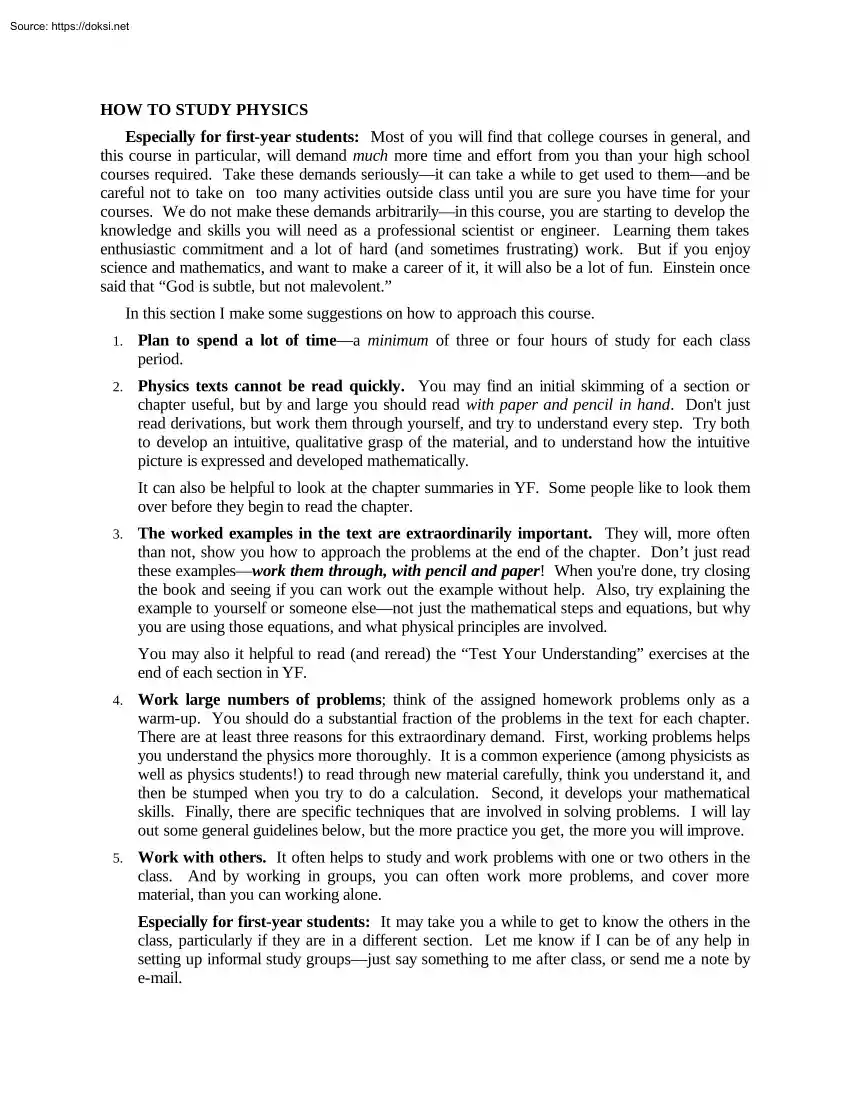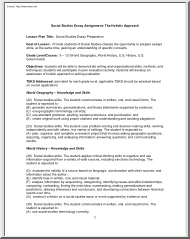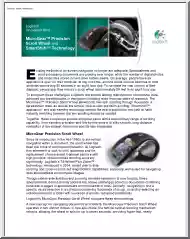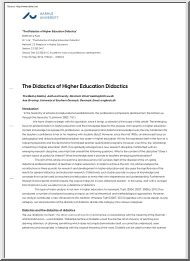Please log in to read this in our online viewer!

Please log in to read this in our online viewer!
No comments yet. You can be the first!
What did others read after this?
Content extract
HOW TO STUDY PHYSICS Especially for first-year students: Most of you will find that college courses in general, and this course in particular, will demand much more time and effort from you than your high school courses required. Take these demands seriouslyit can take a while to get used to themand be careful not to take on too many activities outside class until you are sure you have time for your courses. We do not make these demands arbitrarilyin this course, you are starting to develop the knowledge and skills you will need as a professional scientist or engineer. Learning them takes enthusiastic commitment and a lot of hard (and sometimes frustrating) work. But if you enjoy science and mathematics, and want to make a career of it, it will also be a lot of fun. Einstein once said that “God is subtle, but not malevolent.” In this section I make some suggestions on how to approach this course. 1. Plan to spend a lot of timea minimum of three or four hours of study for each
class period. 2. Physics texts cannot be read quickly. You may find an initial skimming of a section or chapter useful, but by and large you should read with paper and pencil in hand. Don't just read derivations, but work them through yourself, and try to understand every step. Try both to develop an intuitive, qualitative grasp of the material, and to understand how the intuitive picture is expressed and developed mathematically. It can also be helpful to look at the chapter summaries in YF. Some people like to look them over before they begin to read the chapter. 3. The worked examples in the text are extraordinarily important. They will, more often than not, show you how to approach the problems at the end of the chapter. Don’t just read these exampleswork them through, with pencil and paper! When you're done, try closing the book and seeing if you can work out the example without help. Also, try explaining the example to yourself or someone elsenot just the
mathematical steps and equations, but why you are using those equations, and what physical principles are involved. You may also it helpful to read (and reread) the “Test Your Understanding” exercises at the end of each section in YF. 4. Work large numbers of problems; think of the assigned homework problems only as a warm-up. You should do a substantial fraction of the problems in the text for each chapter There are at least three reasons for this extraordinary demand. First, working problems helps you understand the physics more thoroughly. It is a common experience (among physicists as well as physics students!) to read through new material carefully, think you understand it, and then be stumped when you try to do a calculation. Second, it develops your mathematical skills. Finally, there are specific techniques that are involved in solving problems I will lay out some general guidelines below, but the more practice you get, the more you will improve. 5. Work with others. It
often helps to study and work problems with one or two others in the class. And by working in groups, you can often work more problems, and cover more material, than you can working alone. Especially for first-year students: It may take you a while to get to know the others in the class, particularly if they are in a different section. Let me know if I can be of any help in setting up informal study groupsjust say something to me after class, or send me a note by e-mail. Physics 191 Course Outline Fall 2009 6. Don't get behind in your work. Physics is a cumulative subject; the material you will study later in the semester (and the year) builds on what you have learned earlier. 7. GET HELP WHEN YOU NEED IT. I expect you to have a lot of questions about this material, and to experience a certain amount of confusion and frustration at times. It is a necessary, if unfortunate, part of learning. One of the most important functions of the faculty is to be available for
individual help; in addition, I will conduct frequent late afternoon review sessions to work problems and answer questions. The only stupid questions are the ones you don't ask. HOW TO SOLVE PHYSICS PROBLEMS The following suggestions are a long-winded way of illustrating the advice of John Wheeler, a prominent 20th century physicist: "Never begin to solve a problem until you know the answer." Wheeler means that you should not simply stuff numbers blindly into equations. Rather, try to have a clear mental picture of the problem, understand where the equations come from and what they mean. It also can help to have a general idea of what the order of magnitude of the numerical answer should be. These suggestions come not only from my own experience, but are the results of considerable research conducted in recent years on how successful scientists and engineers solve problems. 1. First, get an intuitive idea of what the problem involves Describe the problem to yourself
Make a careful sketch. Ask yourself what the qualitative features of the solution are likely to be. Learning physics involves combining an intuitive understanding and a mathematical description of nature. If you jump too quickly to the mathematical description, it is easy either to head off in a wrong direction, or to get a result that you don't understand fullyeven if it's correct. 2. Once you understand the problem intuitively, plan a solution What information are you given, and what do you need to calculate. What physical laws pertain to this problem? 3. Now, proceed to a mathematical description of the problem What equations will you need? How will you use them? Try not to think of the equations as "formulas," but rather ask yourself what they tell you about nature. 4. Carry out your calculations algebraically at first; that is, don't put in numerical values until the end. If you substitute in numbers too soon, it is easy to lose sight of how various
quantities affect each other. Suppose, for example, that you are considering a ball tossed into the air How does the maximum height depend on the initial velocity? If you put in numbers too soon, you can easily lose sight of relations of this sort, which are often the main point of the problem! And as a practical matter, the earlier one puts in numbers, the more likely an arithmetic mistake. 5. Finally, check your answer Is it "reasonable," both numerically or algebraically? Or have you, for example, calculated a velocity that is faster than light, or inadvertently predicted that a ball thrown into the air will accelerate upwards? Checks of this sort can either give you confidence in your solution, or point out possible mistakes. 2 Physics 191 Course Outline Fall 2009 All of this, of course, is more easily said than done. As you begin studying physics, both your intuition and your mathematical skills are relatively undeveloped; it can be hard to know what to trust, or
where to begin. Nor can the above suggestions be followed mechanically, or by rote Try things. You may think you know the right equation, but aren't sure Try it You may get the "right" answer; so far, so good. But don't stop there! Go back and understand the equation, where it comes from, how it's derived, what it says about nature, why it applies to this problem. Talk to one another, and to me, and get help if you need it. Then you'll have learned some physics 3
class period. 2. Physics texts cannot be read quickly. You may find an initial skimming of a section or chapter useful, but by and large you should read with paper and pencil in hand. Don't just read derivations, but work them through yourself, and try to understand every step. Try both to develop an intuitive, qualitative grasp of the material, and to understand how the intuitive picture is expressed and developed mathematically. It can also be helpful to look at the chapter summaries in YF. Some people like to look them over before they begin to read the chapter. 3. The worked examples in the text are extraordinarily important. They will, more often than not, show you how to approach the problems at the end of the chapter. Don’t just read these exampleswork them through, with pencil and paper! When you're done, try closing the book and seeing if you can work out the example without help. Also, try explaining the example to yourself or someone elsenot just the
mathematical steps and equations, but why you are using those equations, and what physical principles are involved. You may also it helpful to read (and reread) the “Test Your Understanding” exercises at the end of each section in YF. 4. Work large numbers of problems; think of the assigned homework problems only as a warm-up. You should do a substantial fraction of the problems in the text for each chapter There are at least three reasons for this extraordinary demand. First, working problems helps you understand the physics more thoroughly. It is a common experience (among physicists as well as physics students!) to read through new material carefully, think you understand it, and then be stumped when you try to do a calculation. Second, it develops your mathematical skills. Finally, there are specific techniques that are involved in solving problems I will lay out some general guidelines below, but the more practice you get, the more you will improve. 5. Work with others. It
often helps to study and work problems with one or two others in the class. And by working in groups, you can often work more problems, and cover more material, than you can working alone. Especially for first-year students: It may take you a while to get to know the others in the class, particularly if they are in a different section. Let me know if I can be of any help in setting up informal study groupsjust say something to me after class, or send me a note by e-mail. Physics 191 Course Outline Fall 2009 6. Don't get behind in your work. Physics is a cumulative subject; the material you will study later in the semester (and the year) builds on what you have learned earlier. 7. GET HELP WHEN YOU NEED IT. I expect you to have a lot of questions about this material, and to experience a certain amount of confusion and frustration at times. It is a necessary, if unfortunate, part of learning. One of the most important functions of the faculty is to be available for
individual help; in addition, I will conduct frequent late afternoon review sessions to work problems and answer questions. The only stupid questions are the ones you don't ask. HOW TO SOLVE PHYSICS PROBLEMS The following suggestions are a long-winded way of illustrating the advice of John Wheeler, a prominent 20th century physicist: "Never begin to solve a problem until you know the answer." Wheeler means that you should not simply stuff numbers blindly into equations. Rather, try to have a clear mental picture of the problem, understand where the equations come from and what they mean. It also can help to have a general idea of what the order of magnitude of the numerical answer should be. These suggestions come not only from my own experience, but are the results of considerable research conducted in recent years on how successful scientists and engineers solve problems. 1. First, get an intuitive idea of what the problem involves Describe the problem to yourself
Make a careful sketch. Ask yourself what the qualitative features of the solution are likely to be. Learning physics involves combining an intuitive understanding and a mathematical description of nature. If you jump too quickly to the mathematical description, it is easy either to head off in a wrong direction, or to get a result that you don't understand fullyeven if it's correct. 2. Once you understand the problem intuitively, plan a solution What information are you given, and what do you need to calculate. What physical laws pertain to this problem? 3. Now, proceed to a mathematical description of the problem What equations will you need? How will you use them? Try not to think of the equations as "formulas," but rather ask yourself what they tell you about nature. 4. Carry out your calculations algebraically at first; that is, don't put in numerical values until the end. If you substitute in numbers too soon, it is easy to lose sight of how various
quantities affect each other. Suppose, for example, that you are considering a ball tossed into the air How does the maximum height depend on the initial velocity? If you put in numbers too soon, you can easily lose sight of relations of this sort, which are often the main point of the problem! And as a practical matter, the earlier one puts in numbers, the more likely an arithmetic mistake. 5. Finally, check your answer Is it "reasonable," both numerically or algebraically? Or have you, for example, calculated a velocity that is faster than light, or inadvertently predicted that a ball thrown into the air will accelerate upwards? Checks of this sort can either give you confidence in your solution, or point out possible mistakes. 2 Physics 191 Course Outline Fall 2009 All of this, of course, is more easily said than done. As you begin studying physics, both your intuition and your mathematical skills are relatively undeveloped; it can be hard to know what to trust, or
where to begin. Nor can the above suggestions be followed mechanically, or by rote Try things. You may think you know the right equation, but aren't sure Try it You may get the "right" answer; so far, so good. But don't stop there! Go back and understand the equation, where it comes from, how it's derived, what it says about nature, why it applies to this problem. Talk to one another, and to me, and get help if you need it. Then you'll have learned some physics 3




 When reading, most of us just let a story wash over us, getting lost in the world of the book rather than paying attention to the individual elements of the plot or writing. However, in English class, our teachers ask us to look at the mechanics of the writing.
When reading, most of us just let a story wash over us, getting lost in the world of the book rather than paying attention to the individual elements of the plot or writing. However, in English class, our teachers ask us to look at the mechanics of the writing.